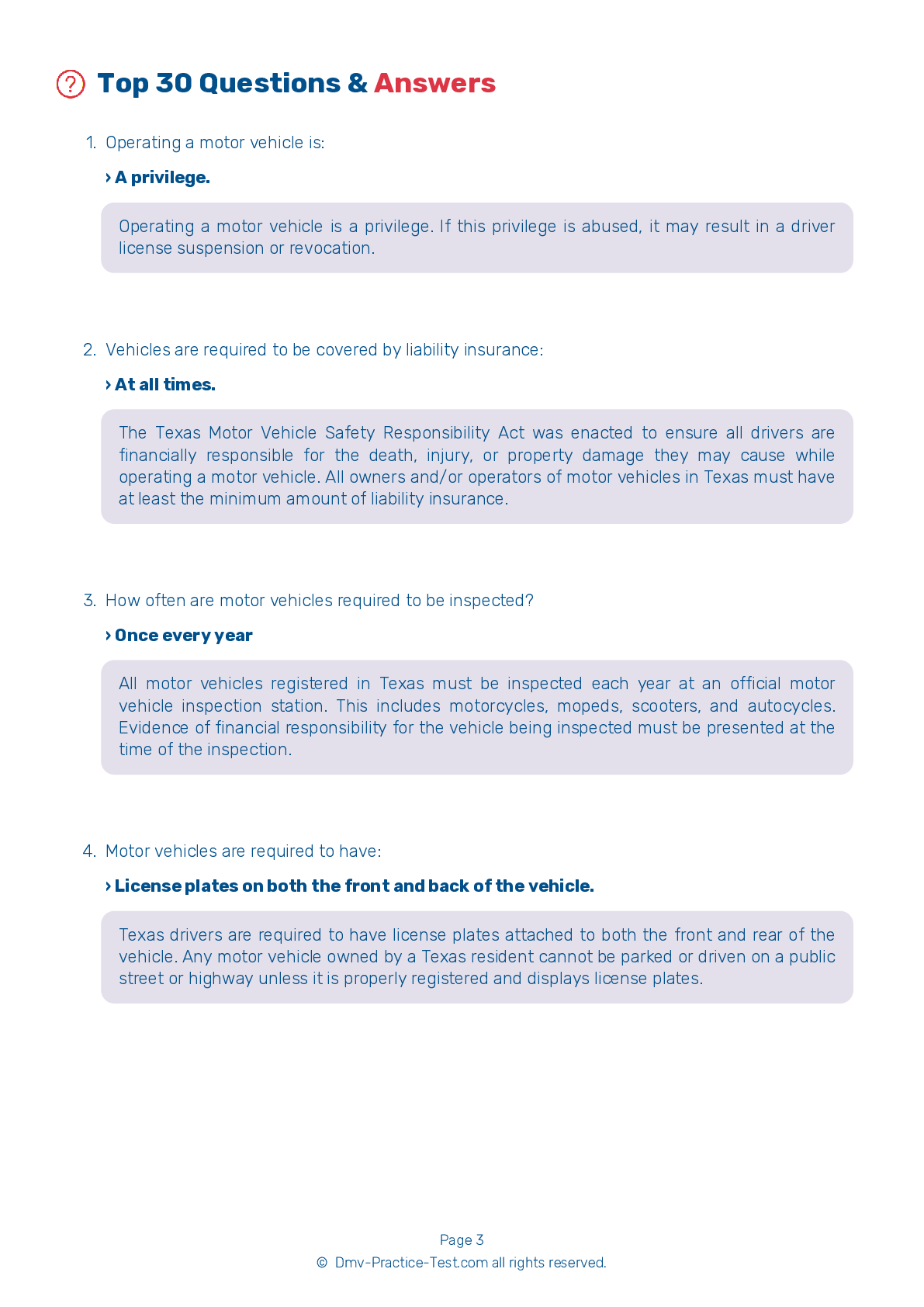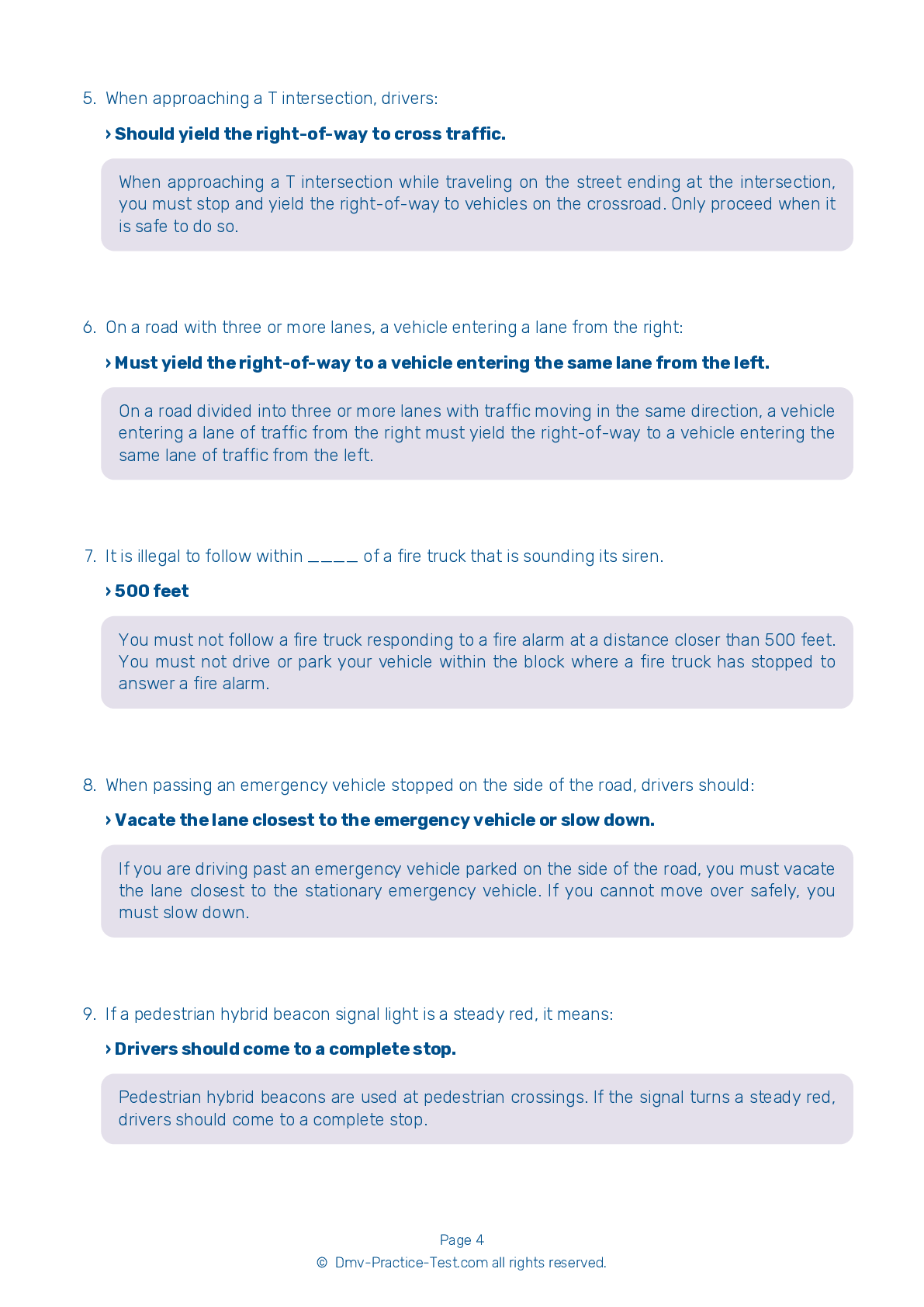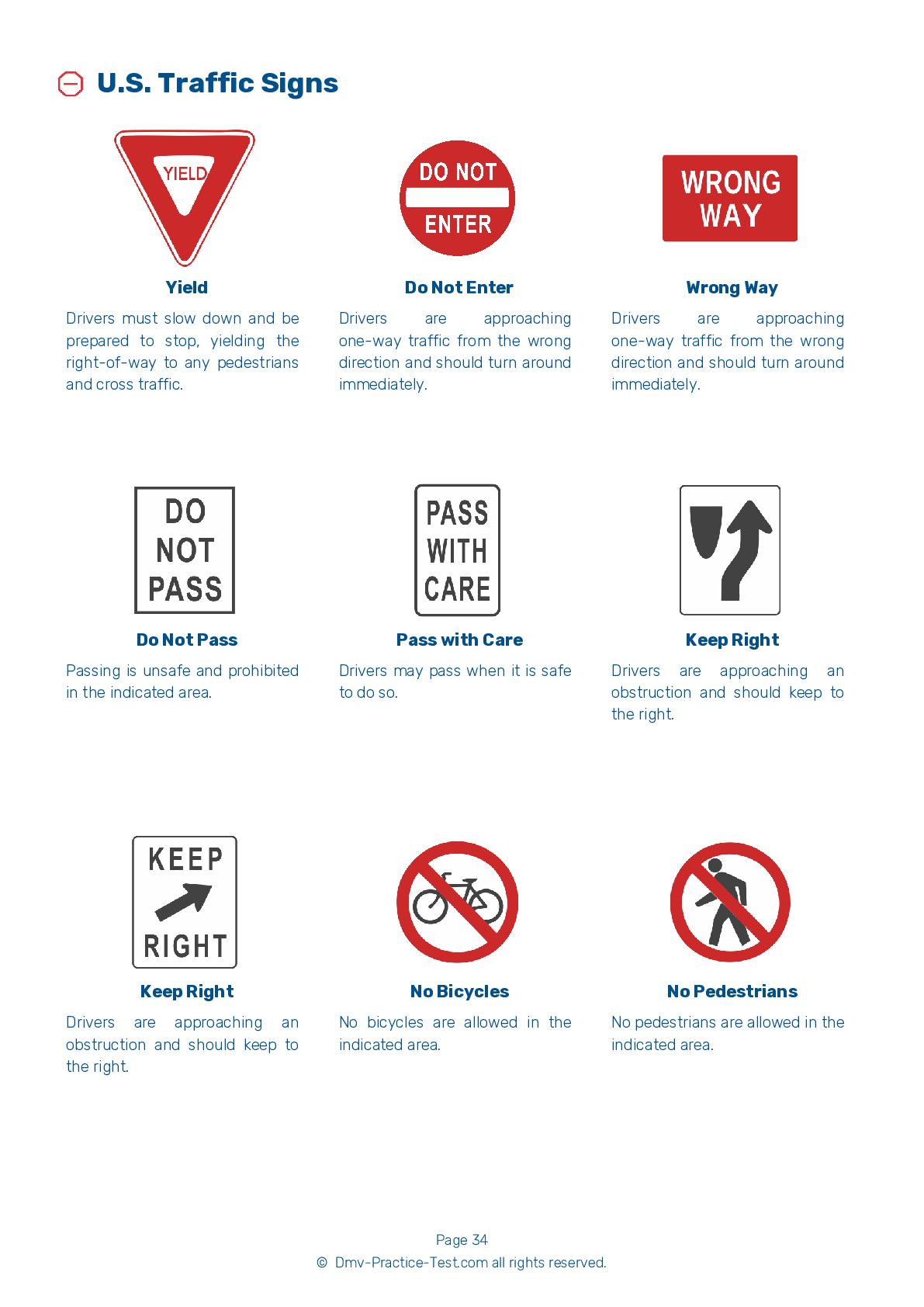FREE Texas DMV Practice Test #20 Page 5 of 5
For January 2025, the Texas DMV practise exams have been revised. It comprises questions based on the most important traffic signals and laws for 2025 from the Texas Driver Handbook. To study for the DMV driving permit test and driver's licence exam, use actual questions that are very similar (often identical!) to the DMV driving permit test and driver's licence exam.
Each question on the practise exam has a tip and explanation to help you recall the ideas. Questions about traffic rules, traffic signs, and driving statutes, as well as knowledge from the Driver Handbook, will be included in the written portion of the official Texas DMV test.
You must properly answer 21 of the 30 questions to receive a passing mark. Use the Texas Department of Motor Vehicles' practise exam to help you prepare for your instruction permit or driver's licence.
The DMV exam is offered in a variety of languages.
Using any form of testing help will result in an automatic fail, and the DMV may take further action against your driver's licence, so avoid it.
25 . When you need to change lanes, it is important to:
Always signal for an appropriate amount of time before making a lane change or exiting a freeway. Before you make any move to the right or left, quickly turn your head and look over your shoulder to see if your blind spot is clear.
26 . When should you return to your previous lane while completing a pass?
Return to the right lane when you can see the entire vehicle you have just passed in your rearview mirror. Use your right turn signal before returning to the right lane.
27 . Allowing a space cushion between your vehicle and its surroundings is important because it:
The only way to be sure you will have enough time to react to mistakes made by other drivers is to leave plenty of space between you and the vehicles around you.
28 . Which of the following influence(s) the effects of alcohol?
Your blood alcohol content (BAC) depends on how much alcohol you drink, how much time passes between drinks, and your weight. Eating before or while you drink helps slow the absorption of alcohol somewhat, but it cannot prevent intoxication or impairment if you have too much to drink.
29 . If you begin to feel tired while driving, the best thing to do is to:
Being fatigued while driving is similar in danger to driving under the influence of alcohol. If you begin to feel tired while driving, the best thing to do is to stop driving.
30 . When faced with an oncoming car to the left and a bicyclist to the right, you should:
When there is more than one potential hazard on the road, you should ensure that you only have to deal with one of them at a time. For example, when there is a bicyclist on the right that you want to pass and an oncoming car to the left, you should not try to squeeze between both at the same time. Instead, let the oncoming car pass, and then pass the bicyclist.
Need Car Insurance? No problem!
Compare the best rates in Texas and find a personalized policy that meets your needs.
1. Are You Currently insured ?
2. Married ?
3. Do you own your Home?
4. Do you have more than 1 car ?
5. Have you or a Family Member Honorably Served in U.S. Military ?
6. Your Name
7. Age
8. Zip code
IMPORTANT REMINDER:Auto Insurance is Mandatory to drive in Texas. Get covered before you hit the road to avoid any fines.
Ranked by best match



